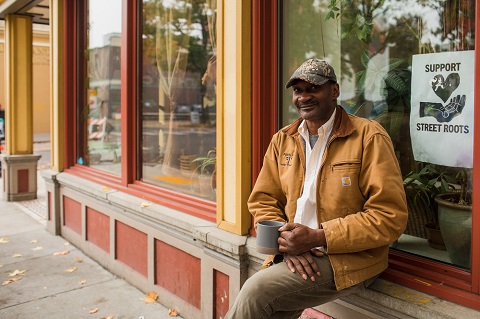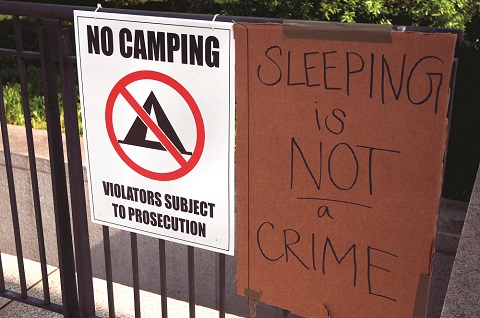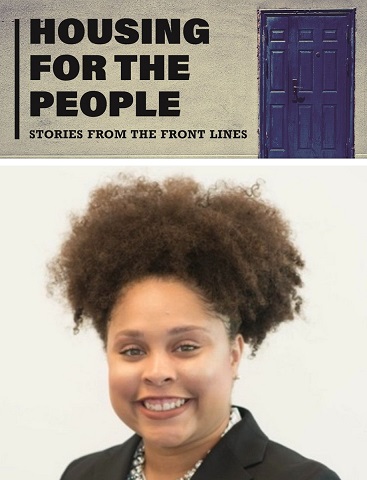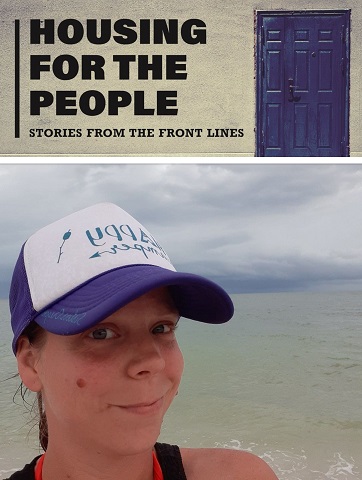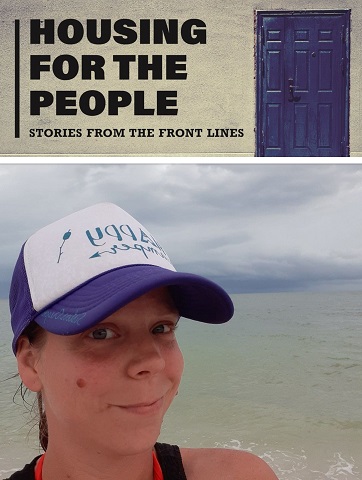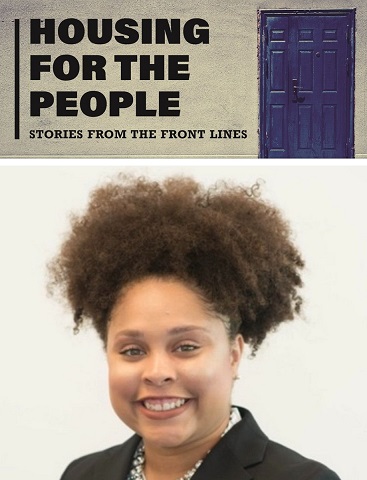By Benjamin Laufer, Hinz&Kunzt
The last message from Olaf S was sent in October 2013 via Facebook Chat. ‘Got a great new job and a wonderful wife, a house and finally a nice life,’ he wrote to his goddaughter. ‘Hamburg is so different and so cool. And the work is just perfect.’
The last news about Olaf S, however, appeared in December 2016 on the homepage of Hinz&Kunzt’s website. The headline read: ‘Homeless Man Dies on Park Bench’.
What happened in the three years between these two messages? With the help of Hinz&Kunzt, Ute (57) and Klaus (58) Müller, who both went to school with Olaf, want to find some answers.

We’re standing in front of the park bench above Hamburg’s Portugiesenviertel [a district of south Hamburg]. This is where Olaf died. Through the trees, we can see the spire of St Michael’s Church. What was it like here a year ago? ‘A dogwalker had reported finding a dead body,’ explains Dirk Matthies. He is a policeman, and he was in the car that was called to the Venusberg area to investigate. In order to help the Müllers, he’s taken the time to visit the location once again. He was prepared to do so at a moment’s notice, because it’s important to him to help Olaf’s friends.
It happened on 20 November 2016. It was night-time – around one in the morning. Olaf, 58 years old, was sitting on the bench, his body tilted slightly over to one side. Around him lay a few small bottles of schnapps. ‘They’re still lying there,’ says policeman Matthies, pointing to a bottle of herbal liqueur in the bushes. Olaf’s death becomes suddenly palpable for his friends and Ute starts to cry. ‘We would have wanted to help him,’ she says.
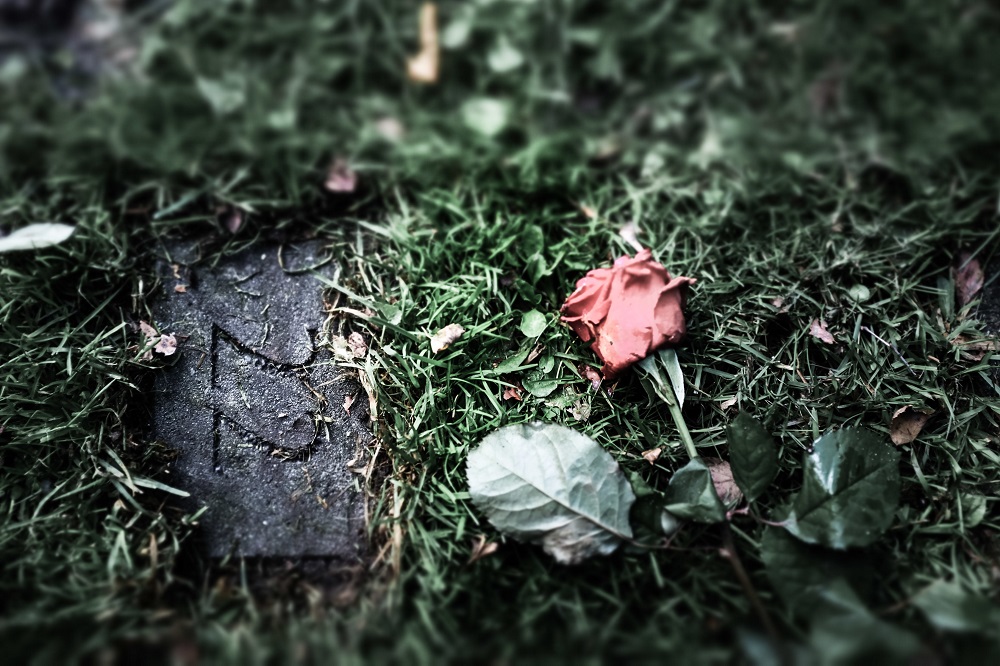
Nobody knows exactly how Olaf died. ‘An autopsy wasn’t carried out because there was no evidence of a crime having been committed,’ a police spokesperson explains. A likely cause of death is stated as being multiple organ-failure. A year ago, public prosecutor Nana Frombach used a different turn of phrase. She wrote to Hinz&Kunzt, specifying that ‘the man probably died as a result of extreme alcohol abuse’. The use of the words ‘likely’ and ‘probably’ suggest that nobody wants to know in any more detail how exactly a homeless person came to die on a public park bench. In winter, it is often the fatal combination of cold and alcohol that takes the lives of people who are out on the street after having fallen through the social safety net. ‘He was dressed in waterproof clothing. But it wasn’t enough to withstand being outside for hours on end,’ remembers Matthies. Did Olaf die of hypothermia? Isn’t that a matter of public interest? At the time, there were no press releases from the police. No one, except for Hinz&Kunzt, reported on Olaf’s death. He died alone.
Olaf’s life began in June 1958 in Osnabrück, a city in north west Germany. He had a ‘completely normal’ childhood, according to Ute Müller: his father was quite strict, but his mother was all the more caring as a result. His mother always granted her son his every wish. The Müllers had known Olaf since the early 1970s. At that time, he went to the same school as Ute and Klaus. He was an enthusiastic basketball player and they often went to the sports hall to watch his games. They celebrated the victories together fairly heavily in the pub afterwards. Olaf enjoyed the attention that he gained through playing sport. ‘He always wanted to be at the centre of things,’ says Ute. ‘He was always like that.’
His wasn’t a life that you would have imagined ending on a park bench in the way it did. After Olaf completed apprenticeship as a locksmith, he kept living with his parents for a while. In 1983, he met Margarete – the great love of his life. Three years later, the two of them were married. Financially, things were quite tight to start off with because Olaf didn’t earn very much working as a locksmith. ‘But they struggled through it,’ explains Ute Müller.
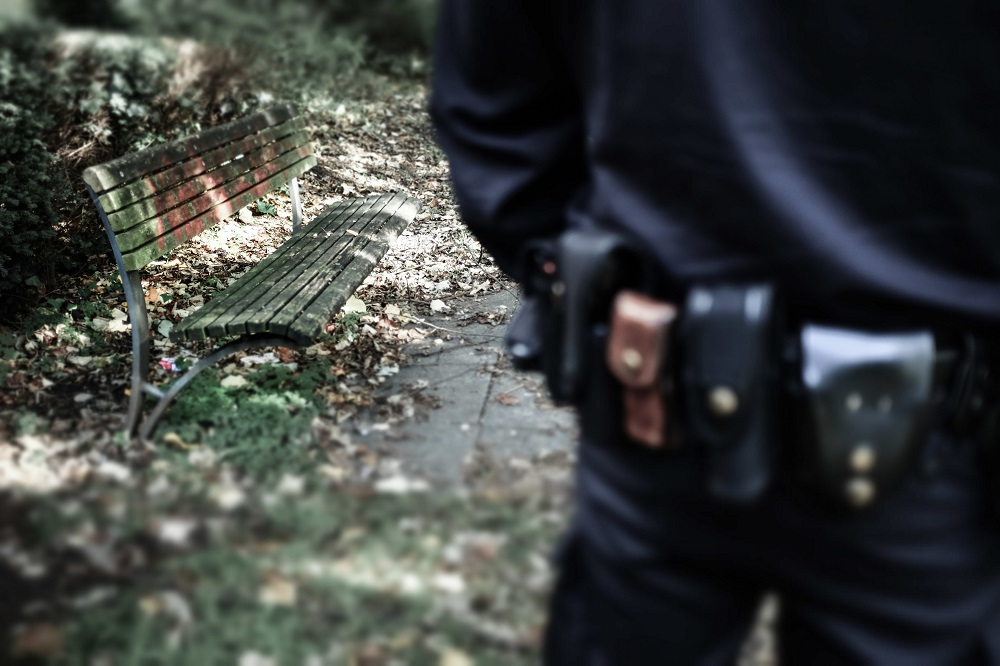
It was onwards and upwards from there. Olaf found himself working in theatre after an acquaintance found him a well-paid job as a stage-hand. Later, he became the stage manager for the orchestra based at the same theatre. ‘He needed people around him, otherwise things would have gone wrong for him,’ says Ute. That’s why he loved the job at the theatre so much, she explains, because of all the people around him: ‘He found that was really great!’
Olaf’s friendship with the Müllers was intense. They went on holidays together and were godparents to each other’s children. ‘He really was a good friend,’ Ute explains. ‘Always there for you straightaway when you needed help.’
It remained like that for 20 years. Then, at some point, it all went wrong. In 1995, Olaf’s wife, Margarette, died. It was the supreme moment of change in his life. After that, Olaf started drinking more. He began to tell his friends things that later turned out to be untrue. ‘He started to only think of himself,’ says Ute. He was always looking to meet women via personal ads and dating sites, but the relationships always broke down. His friendship with Ute and Klaus gradually fell away over the years. Finally, things at work started to go downhill and he lost his position at the theatre.
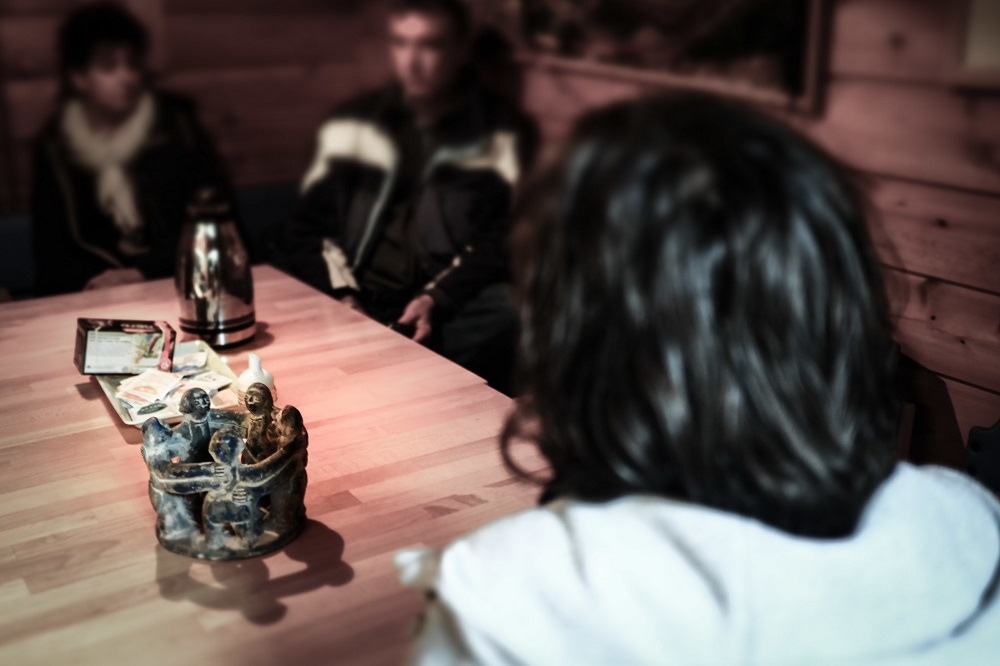
Then came the new start in Hamburg. Olaf’s new job was supposed to start in January 2013. He wrote to say that he had found a work at the newly renovated opera house: ‘Only an office job, none of that schlepping instruments around.’
The opera house is a link to Olaf’s life from 2013 onwards. Perhaps his former colleagues know how he ended up on the street. Michael Bellgardt, the press officer at the opera house, looks through the staff files for us. The result? Olaf had never worked there. ‘Maybe he made something up that he wanted to be true but, in reality, never was,’ wonders Bellgardt. So, it was all a hoax. Does that sound like Olaf? In the past, he had always laid it on thick – ‘He always wanted to come across better than he actually was,’ Ute Müller explains. Once, he even took out a loan, just to be able to show the Müllers that he was able to go on holiday. ‘But lying? No!’ Ute insists. Olaf’s friends guess that perhaps he had been ashamed of the fact that he no longer had a job. Maybe he had broken off contact with Ute and Klaus because the lies that he had carefully constructed were threatening to come crashing down around him. Perhaps it was because his godchild, Nadine – Klaus and Ute’s daughter – had asked him whether she could visit him in Hamburg. That was at the beginning of 2014. He never replied.
The thermometer was sitting below three degrees when Olaf died in November 2016. The winter-aid centre is so close that it can almost be seen directly from the park bench where he was found. There, he would have been provided with a bed to sleep in away from the cold of the night. Olaf had occasionally slept there and he had once stayed in at Pik As, an emergency shelter for the homeless, for three weeks. How come he did not go there on that night in November? It’s impossible to do anything other than speculate. ‘Maybe he wasn’t thinking clearly anymore, and he didn’t realise how dangerous it was to be outside,’ guesses his friend Bruno, who spent half a year sleeping rough with him. Olaf drank a lot of alcohol during his time in Hamburg.

Soon after, Olaf’s friend would no longer answer our questions. But we had already managed to get some information from him. Every day, the two had spent time in the Alimaus – a charitable relief centre for Hamburg’s homeless, where the two friends were fed. ‘Maybe the people there would know more,’ wrote Bruno. This proved true: Christiane Hartkopf remembered Olaf well and invited the Müllers to meet with her. ‘He was someone that entertained the whole table with his stories,’ she recalls. ‘Yes, telling stories – he always liked to do that,’ agrees Klaus Müller. Hartkopf’s words reminded Klaus of back when he and Olaf were in the pub with the other basketballers. Olaf could also be quite different – ‘as soon as we were out in the park, sitting on a bench, he was a much more peaceful, serious person,’ Hartkopf continues. In those moments, he had described his daily life on the street, telling her ‘how awful he thought everything was’.
Sometimes he had tried to escape his day-to-day existence. ‘On good days, he went to a lot of trouble to shut himself off from it all,’ explains Hartkopf. He would go to a completely different area of town – out of the St Pauli district – away from his drinking friends. Sometimes, though, he had been so drunk that, out of shame, he didn’t want to be seen anywhere.
Olaf had also told Christiane Hartkopf a story about all of this. He had related to her how he had apparently ended up on the street. ‘A woman had thrown him out of a flat and he could no longer get any of his things,’ she says. ‘He couldn’t get access to his money either.’ He wrote to his goddaughter, explaining that ‘his darling’ worked in a bank and knew ‘what’s best.’ That’s why he had wanted to take all his savings to Hamburg with him. Did this woman really exist? Did she actually strip him of all his savings? ‘That would be crazy. If that’s true, he would have found himself with nothing overnight,’ Klaus says. ‘Down and out,’ replies Ute.

The Müllers head along Hamburg’s Reeperbahn – a strip famous for its nightlife and brothels – passing by many of the city’s homeless who are lying out in front of the buildings. They can barely imagine that their friend Olaf lived like this at the end of his life. Near Cafée mit Herz – another centre for the homeless at the end of the district – we ask after Olaf again. A tattooed man, known as Locke, recognises Olaf in a photo that we are carrying with us. ‘Yep, he was here, but that’s a long time ago now,’ says Locke. Back then, he had turned away offers of assistance. They had even wanted to sort him out with a flat to live in, but Olaf didn’t want it. ‘The guy had built up a wall around himself,’ Locke says. Ute Müller is surprised. ‘But that’s not like him at all,’ she murmurs.
Olaf’s home was the Hafencity district during the last few years of his life. It was here that the police had occasionally searched through his things, most of the time because there had been some kind of trouble. He had told Christiane Hartkopf that he slept rough on the Magellan-Terrassen – a public square on the waterfront. Ute and Klaus stand in the square, looking out over the Elbphilharmonie concert-hall to the right and the luxury Hafencity flats to the left. ‘Maybe Olaf came here to get away from all that back there,’ says Klaus. ‘Maybe he needed to feel like he hadn’t quite hit rock bottom,’ Ute ponders.
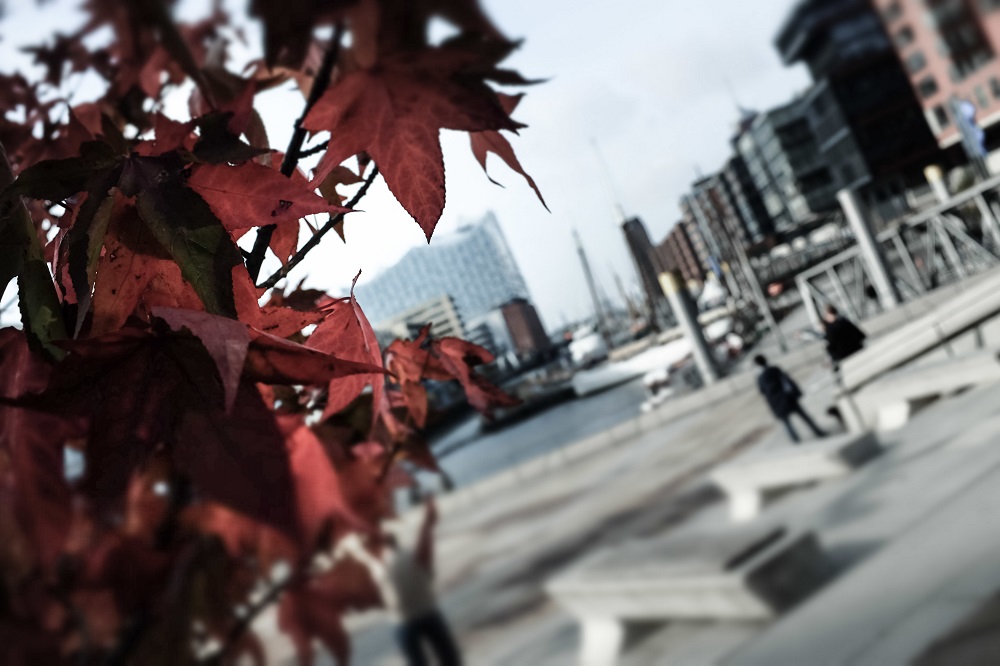
We can’t get any closer to Olaf than this. The Müllers would have liked to know more about the fate of their friend. For example, they would have liked to find out what he had been doing in the last few months of his life. This is because he wasn’t seen in the Alimaus after the summer of 2016. ‘There’s still a bit missing,’ Ute explains.
Ute will come back to Hamburg in November with her family, when Olaf will be commemorated by a church service for the homeless who have died. ‘It feels good, that people can remember him,’ she says. Olaf may have died alone, but he hasn’t been forgotten.
Translated from German by Jonathan Drake







